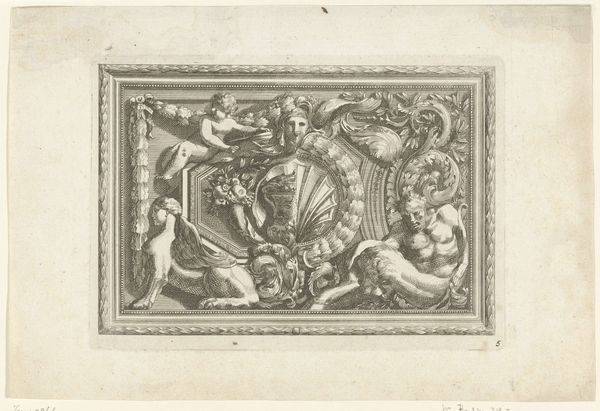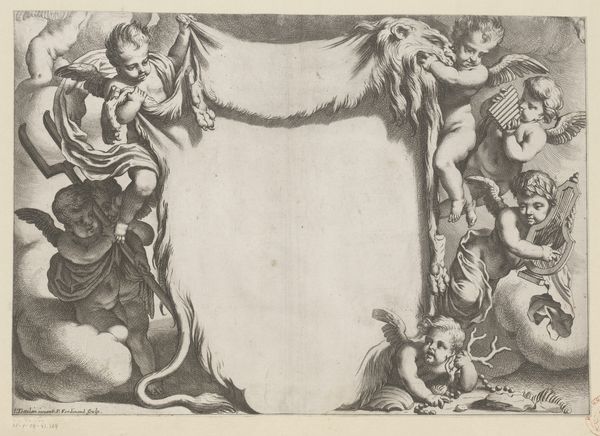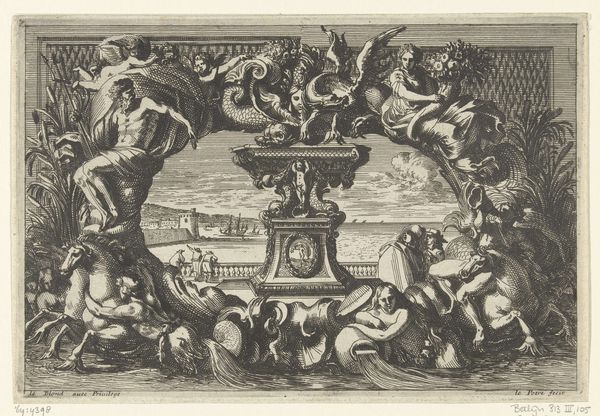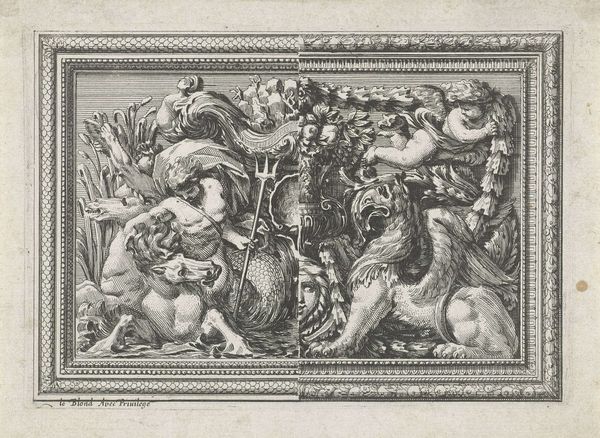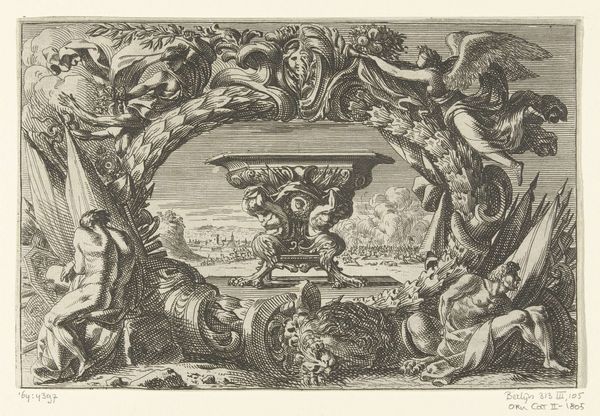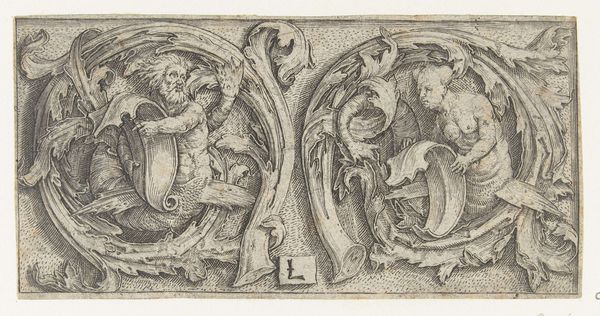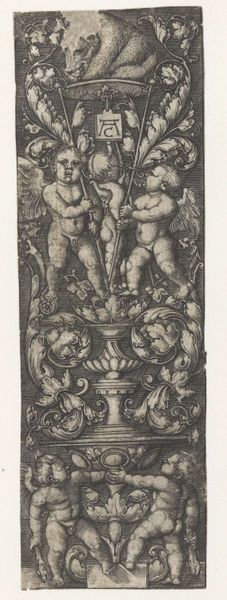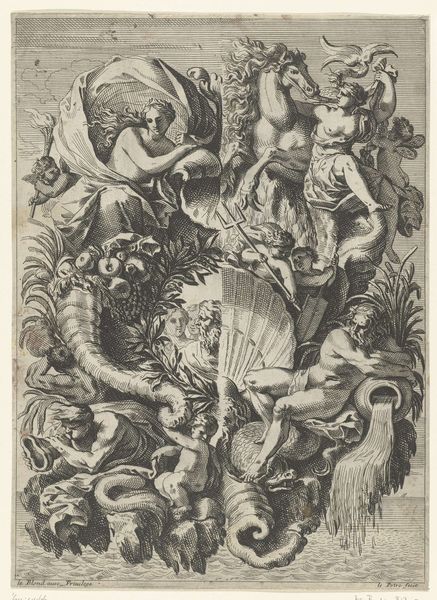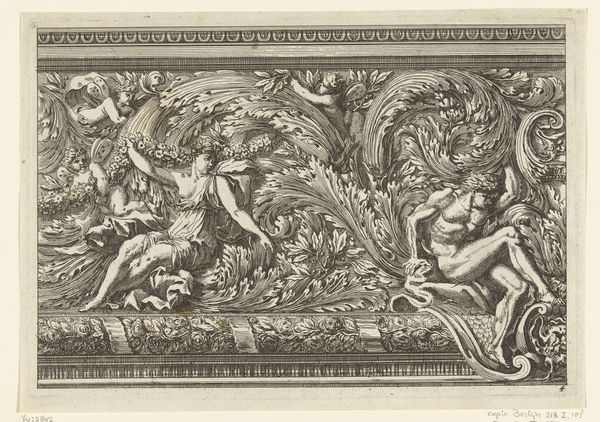
drawing, ornament, engraving
#
drawing
#
ornament
#
pen drawing
#
pen illustration
#
pen sketch
#
pencil sketch
#
11_renaissance
#
personal sketchbook
#
ink drawing experimentation
#
pen-ink sketch
#
pen work
#
sketchbook drawing
#
academic-art
#
sketchbook art
#
engraving
Dimensions: height 50 mm, width 144 mm
Copyright: Rijks Museum: Open Domain
This ornament with male and female satyrs was created in the 16th century by the artist known as Monogrammist AC. The print presents a scene of revelry and freedom, drawing on classical imagery. In 16th-century Europe, the revival of classical themes coincided with a period of immense social and religious upheaval. This piece, with its bacchanalian figures, subtly challenges the stricter moral codes of the time. The Rijksmuseum, where this piece is housed, like many major art institutions, plays a key role in shaping our understanding of art history. To truly understand this work, we must consider not only the artistic skill involved but also the societal context. Researching the religious and social norms of 16th-century Europe, along with the artist's other works, would provide a richer appreciation of this ornament's original meaning and impact. Art history isn't just about aesthetics; it's about understanding the dialogue between art and society.
Comments
No comments
Be the first to comment and join the conversation on the ultimate creative platform.

